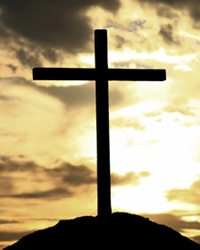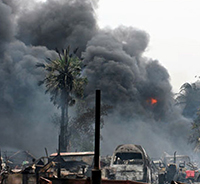 How Derived: Past Life Memories in Child
How Derived: Past Life Memories in Child
How Derived: Past Life Memories in Childhood
Researcher: Erlender Haraldsson, PhD
From: I Saw a Light and Came Here, by Erlender Haroldsson, PhD and James Matlock, PhD
Article by: Walter Semkiw, MD
Sandika Tharanga was born in May 1979 to Roman Catholic parents who lived on the outskirts of Colombo, Sri Lanka. At the age of three, he started to talk about a past life as a monk in a monastery. He said that there were four or five monks who lived there, who were under the authority of a head monk. He asked to be taken back to his monastery. Like in many reincarnation cases, Sandika stated that his mother was not his real mother. He asked to be taken to his previous mother’s home.
Sandika tries to Convert his Parents to his Past Life Religion: Buddhism
From the time that he started to speak about a past lifetime, Sandika demonstrated the behavior of Buddhist monk. He convinced his parents to obtain a picture of Buddha and later a Buddha statue. He would pick flowers and place them as an offering to the Buddha image and figurine. He had no interest in going to church but rather wanted to go to Buddhist temples. In a comical twist, the little boy tried to convert his Catholic parents to Buddhism, which they resisted.
Remarkably, Sandika would chant religious stanzas, which his parent did not understand, but they believed their son was chanting in Pali, which is a language from India that the texts of Theravada Buddhism are written in. Sandika engaged in this form of worship two to three times a day. In addition, on days of the full moon, Sandika would ask his father to take him to a Buddhist temple, which is a tradition of that religion.
He also convinced his Catholic parents to give donations to Buddhist monks and he induced his parents to have Buddhist monks come to their home to perform a ceremony. In addition, as a small child, he refused to eat meat, which is also consistent with Buddhist teachings.
 Sandika asked to be taken to his past life temple. His father cooperated by taking Sandika to several Buddhist temples in the area, but Sandika did not recognize any of them as his past life home. At one temple, which was situated two miles from their residence, a monk gave Sandika a bouquet of flowers and waited to see what he would do. Sandika promptly climbed steps to the temple shrine room, presented the flowers to an image of Buddha and then worshipped there. These behaviors are typical of a devout Buddhist.
Sandika asked to be taken to his past life temple. His father cooperated by taking Sandika to several Buddhist temples in the area, but Sandika did not recognize any of them as his past life home. At one temple, which was situated two miles from their residence, a monk gave Sandika a bouquet of flowers and waited to see what he would do. Sandika promptly climbed steps to the temple shrine room, presented the flowers to an image of Buddha and then worshipped there. These behaviors are typical of a devout Buddhist.
Sandika was an excellent and well-behaved student, always in the top three of his class. His best grades were in his favorite subject, Buddhism. He even went to a Buddhist Sunday school and eventually was admitted to Ananda College, a prestigious Buddhist institution. He later completed a degree in engineering.
Past Life Phobia of Explosions
Regarding his past life death, Sandika said that he was going to an event in which townspeople were going to host Buddhist monks for a ceremonial luncheon. He then heard an explosion, which is the last thing he remembered about his past life.
Sandika had a great fear of fire crackers and loud, sudden noises. When he experienced these types of sounds, Sandika would instinctively and fearfully place his hands on the left side of his chest. This placement of his hands corresponded to a dark birthmark on the left side of his chest.
Though Sandika’s past life persona was never identified, Sri Lanka went through a bitter civil war waged between Hindu militants and the majority Buddhist government. It is speculated that in his past lifetime, Sandika was killed in the turmoil of this war. In particular, in a Hindu uprising in 1971, eight years before Sandika was born, a several Buddhist monks were killed.
Reincarnation: Belief versus Knowledge
 Ironically, both the Hindu and Buddhist religions profess a belief in reincarnation. Belief is much different than knowing reincarnation is true based on evidence. Further, those who promote reincarnation do not always preach that the religion one is born into can vary from one lifetime to another. If people understood that one could be born Hindu in one lifetime, Buddhist in another and into a different religion after that, such wars would become obsolete.
Ironically, both the Hindu and Buddhist religions profess a belief in reincarnation. Belief is much different than knowing reincarnation is true based on evidence. Further, those who promote reincarnation do not always preach that the religion one is born into can vary from one lifetime to another. If people understood that one could be born Hindu in one lifetime, Buddhist in another and into a different religion after that, such wars would become obsolete.
Though this case was not “solved” in that Sandika’s past life persona was not specifically identified, his Buddhist behaviors, which were so much in contrast to his parents’ Catholic beliefs, make this an impressive reincarnation story. That said, there are many solved cases that show that souls, from one lifetime to another, can:
Change Religion, Nationality and Ethnic Affiliation through Reincarnation
Principles of Reincarnation-Understanding Past Lives
Past Life Phobia: Sandika had a phobia of explosive noises, which likely was due to his being killed by a gunshot or a bomb in his previous life.
Past Life Birthmark: When Sandika recoiled at the sound of a loud noise, he would place his hands on a birthmark on his chest, which likely represented an entry wound from a bullet or shrapnel that led to his past life death.
Xenoglossy: During worship, Sandika would recite verses in an unlearned language, which his parents believed was Pali, the language used by Buddhist monks in prayer.
Source: Haraldsson, Erlendur and Matlock, James, I Saw a Light and Came Here, White Crow Books, 2016, pages 33-36
